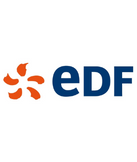How Does Carbon Offsetting Work? A Simple Guide

It’s impossible to escape the climate conversation at the moment, with impassioned activists such as Greta Thunberg and global environmental movements like Extinction Rebellion helping to keep at the forefront of our minds. Our growing concern about the climate crisis is shown through the sharp rise in Google searches for ‘carbon offsets’. Exactly what is carbon offsetting, and does it really work?
What is carbon offsetting?
We all release carbon dioxide (CO2) into the environment, whether that’s through heating, eating, charging devices or travelling. This CO2 contributes to increasing the volume of greenhouse gases (GHGs) in the environment, which has a huge impact on climate change.
And it’s not just about the air we breathe. Other pressing issues such as animal welfare and decreasing fresh water supplies are compounded by the climate crisis. One scientific study even claims that climate change could decimate a third of all plant and animal species within the next few decades if we don’t take immediate action.
Put in the simplest terms, carbon offsetting is compensating for these emissions by funding projects that have a positive environmental impact elsewhere, for example in reforestation programs or investing in renewable energy in developing countries. In theory, we’re ‘carbon repairing’ what we have ‘carbon damaged’.
However, carbon offsetting is just one of a number of different actions we can take to reduce our carbon emissions. Just because you’re offsetting your flight, it doesn’t mean you shouldn’t look to reduce your emissions elsewhere too.
The carbon offsetting market
The carbon offset market is divided into two main categories: offsetting for compliance reasons and voluntary carbon offsets.
Compliance carbon offsetting
In the compliance market, Certified Emission Reduction (CER) credits are issued for offsets created by emission reduction projects. There credits can be traded between companies and governments to comply with regulations set out in the Kyoto Protocol, which caps the amount of carbon dioxide emissions that can be emitted by any one body or organisation. For example, if a nation has already exceeded its quota of carbon emissions, it can buy CER credits from a nation that still has emission ‘units’ to spare.
CER credits are verified by the United Nations and each one is equivalent to one tonne of CO2 towards meeting Kyoto targets.
What is the Kyoto Protocol?The Kyoto Protocol is an international treaty committing nations to limits on emissions of greenhouse gases such as CO2, to reduce the impact of climate change.
Voluntary carbon offsetting

The voluntary carbon market, on the other hand, was created for those that choose to offset their emissions for personal reasons, rather than simply following protocols. As such, the voluntary carbon market is unregulated and a number of different standards and verifications have been created to ensure that offsets that are purchased actually go to the right cause.
This market is mostly made up of private individuals, small businesses, educational institutions and non-governmental organisations that want to make a difference to their own environmental impact and carbon footprint. Certificates are issued for a number of carbon credits, which account for the CO2 that is being offset.
Why offset your emissions?
Carbon neutrality - or net-zero carbon emissions - is balancing out our emissions and their removal. Unfortunately, only limiting our emissions won’t take us all the way to net-zero. For that, we do need to compensate for our carbon output. Carbon offsetting programs can help this and the first step towards making a difference is working out an estimation of your carbon footprint.
How do I calculate my carbon footprint?
To get an idea of the size of our individual carbon footprint, we need to take into account a number of different factors, such as your household size, your travel throughout the year, your diet and consumption habits.
Carbon footprint calculators
One of the most accurate ways of working out your carbon footprint is by using a carbon footprint calculator, such as the one the World Wildlife Fund’s (WWF) website. Once you have filled out the questionnaire, you’ll be shown your carbon footprint compared to the average, the areas where you emit the most emissions and tips on how you can cut down.
Where to offset your emissions
There are a number of different projects you can invest in to offset your carbon emissions, both here at home and in the developing world.
Concerned about your carbon footprint?Selectra can help you offset your carbon emissions as part of our partnership with EcoAct. To learn more, give us a free call on 020 3936 0059 or find out how to reduce your carbon footprint.
Carbon offset projects
For most of us, the first thing that springs to mind when we hear of carbon offsetting programs is tree planting and reforestation projects. In truth, there are a number of concerns when it comes to projects like this. For example, it can take 10-20 years for a tree to grow and sequester the emissions provided by just one flight.
Another concern is the issue of ‘carbon leakage’. This is when, for example, a deforestation project is paid for as part of a carbon offsetting program, but the company logging in that area simply decides to move on to another forest instead, completely counteracting your offset.
The other main type of project is the replacement of old coal-fired energy plants with solar, hydro or wind power. Besides the obvious environmental benefits of reducing fossil fuel fumes, these projects often provide new jobs and other benefits to the local community.
Where does carbon offset money go?
Not all carbon offsets are created equal. If you’re considering investing in a carbon offsetting program, you’re going to want to do some research to know exactly what you’re investing in.
Carbon certifications and quality labels
It can sometimes be confusing to know which program to choose to be certain your investment is going where you intend it to. While the compliance carbon market is regulated, the voluntary carbon market is not. Instead, there are a few different verification standards to assure investors that their money is going to a good cause. Therefore, it’s worth doing some research beforehand so you’re clued up on the transparency and credibility of any organisation carrying out voluntary carbon offset projects.
Verified Carbon Standard (VCS)
The most popular voluntary carbon offsetting standard is the non-profit Verified Carbon Standard (VCS). VCS credits can be issued for programs that actively offset carbon emissions, but also for projects that aid sustainable development in communities to help reduce their own emissions, such as providing clean-burning cookstoves.
To become certified and receive accreditation, projects must meet a number of different criteria:
- Credits can only be issued for permanent projects with a lasting effect. For example, if a tree planted on a VCS program is cut down, it must be replaced.
- Credits must be ‘real’ - they can only be issued for a project that has already been approved or completed, rather than simply a pledge to take action.
- Project activity must not have any negative effect or disruption to sustainable development in a community.
- All credits must be validated by a third party with no conflict of interests in the project.
Finally, all VCS projects are subject to a transparent registry system. The number of credits issued, auditing reports and any other supporting documentation is made free to download online on a dedicated website.
Gold Standard Verified Emissions Reduction (GS VER)
The Gold Standard Verified Emissions Reduction (GS VER) issues VER credits which go towards sustainable development projects, for example, access to safe water access in Rwanda or clean-burning stoves in Chad.
Each credit verified as Gold Standard is the equivalent of one tonne of carbon dioxide being removed from the atmosphere. Carbon offsetting projects are only Gold Standard approved if they can prove that the carbon savings are ‘additional’ and would not have come about without the support of carbon offsetting, for example through government funding or external investment.
The Gandhi Project

Each year, Selectra buys carbon credits from its offsetting partners and asks them to cancel the number of credits to be offset on behalf of its customers. In exchange, Selectra receives an offset certificate from its partners, which is sent to each customer by email.
Between 2019 and 2021, Selectra acquired and canceled more than 200,000 carbon credits issued by the Gandhi Project in India. This project consisted of developing wind power farms in India, where 56% of the current energy demand is covered by coal consumption.
The project was VCS (Verified Carbon Standard) certified. Thanks to the 21 wind turbines set up, almost 36 GWh of green electricity are produced every year, canceling out more than 33 000 tons of equivalent CO2 emissions. In addition, this project has had several direct positive impacts on local communities:
- 80 schools were created and supported thanks to a grants system, which notably contributed to increasing school enrolment by 50% in Tidi, which is situated in the Udaipur District, in Rajasthan.
- +800 people benefited from food aid.
- A more stable and accessible electricity network was set up.
About EcoAct
Founded in 2006, EcoAct is one of the world’s leaders in the climate change and sustainable development fields. Over the last 14 years, it has delivered more than 1,000 projects and helped create over 20,000 jobs in developing countries.
What else can I do to reduce my carbon footprint?
As well as carbon offsetting, we should also focus on our own consumption habits and how we can cut down on our CO2 emissions. After all, why only compensate if we continue to contribute to the climate disaster by overconsuming and wasting?
There are a number of simple steps we can take to cut down our carbon emissions. One of the easiest ways is by switching to a renewable energy plan to power your home, if you haven’t already. Most people seem to equate green energy with expensive bills, but this isn’t always the case and many suppliers that provide gas and electricity from renewable sources actually offer cheaper tariffs than the traditional Big Six energy companies.
Other obvious lifestyle changes are your transport choices. Consider whether you really need to drive to the office if you live in the city. Most major towns in the UK have an extensive public transport system, and even if you live in the suburbs, many provide park and ride services, where you can leave your car on the outskirts and take the bus the rest of the way into work.
For those journeys that just have to be made by car, why not invest in a less polluting hybrid or electric vehicle if you can afford it? If this is too cost-prohibitive, you could always consider signing up for a carpooling app, such as Waze, BlaBlaCar or Amovens. This way you’ll be splitting the carbon emissions of one vehicle between the number of passengers, halving or even reducing your CO2 output by a fifth.
When it comes to those longer-distance journeys, the train can sometimes be just as good an option as flying. Sure, it may cost more than a budget flight, but for that extra cost, you’re saving on your own personal carbon emissions, as well as avoiding luggage restrictions. Plus you’ll probably arrive directly at your destination, rather than an airport on the outskirts of the city.
Making small changes to your diet can have a huge impact on your carbon footprint. Beef, lamb and even cheese are among the main offenders when it comes to emissions from farm to table, while fruit, vegetables, nuts and beans have a much lower impact on your carbon footprint.
A vegetarian or even vegan lifestyle may not be for everyone, but why not try simply cutting down on your meat consumption and replacing proteins in the odd meal with more sustainable alternatives, such as certain types of fish, lentils, beans or meat alternatives such as Quorn.

